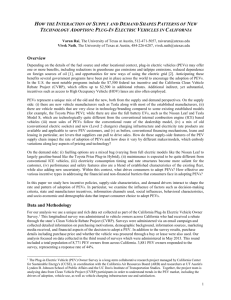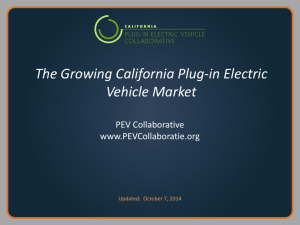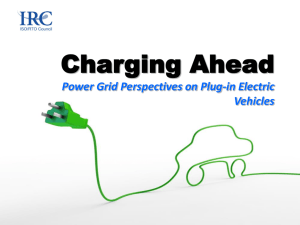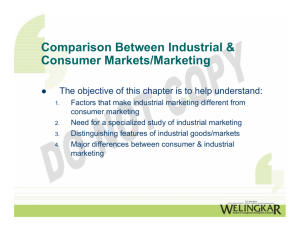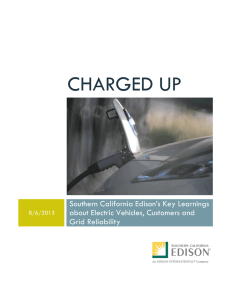PEV Market Briefing: May 2014
advertisement
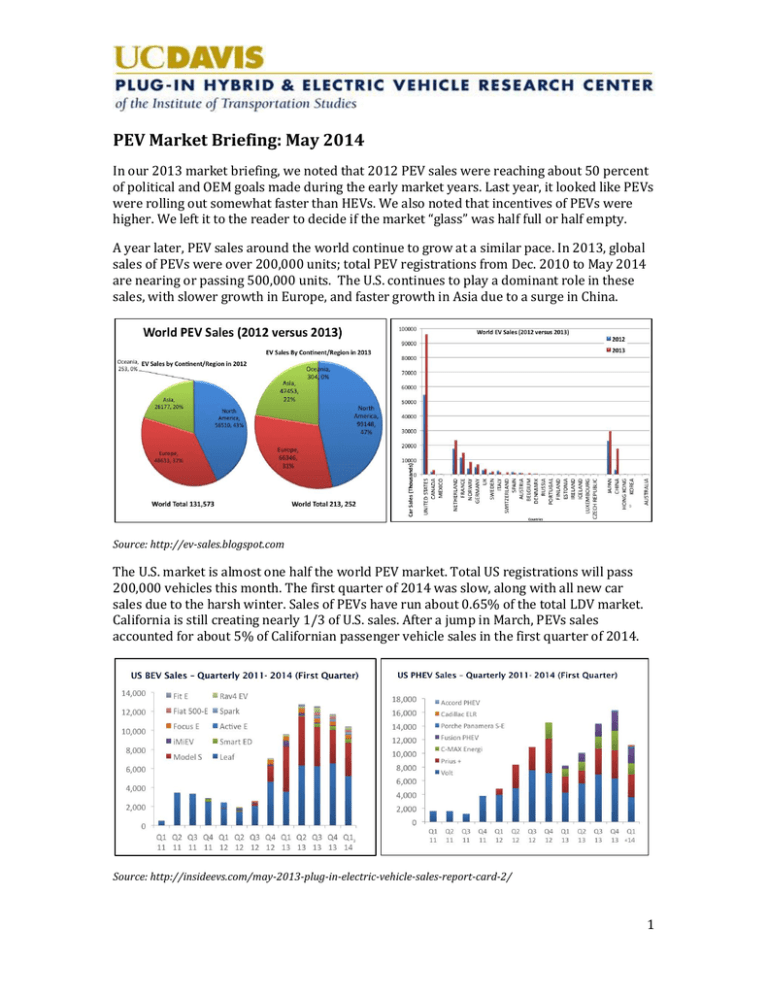
PEV Market Briefing: May 2014 In our 2013 market briefing, we noted that 2012 PEV sales were reaching about 50 percent of political and OEM goals made during the early market years. Last year, it looked like PEVs were rolling out somewhat faster than HEVs. We also noted that incentives of PEVs were higher. We left it to the reader to decide if the market “glass” was half full or half empty. A year later, PEV sales around the world continue to grow at a similar pace. In 2013, global sales of PEVs were over 200,000 units; total PEV registrations from Dec. 2010 to May 2014 are nearing or passing 500,000 units. The U.S. continues to play a dominant role in these sales, with slower growth in Europe, and faster growth in Asia due to a surge in China. Source: http://ev-sales.blogspot.com The U.S. market is almost one half the world PEV market. Total US registrations will pass 200,000 vehicles this month. The first quarter of 2014 was slow, along with all new car sales due to the harsh winter. Sales of PEVs have run about 0.65% of the total LDV market. California is still creating nearly 1/3 of U.S. sales. After a jump in March, PEVs sales accounted for about 5% of Californian passenger vehicle sales in the first quarter of 2014. Source: http://insideevs.com/may-2013-plug-in-electric-vehicle-sales-report-card-2/ 1 Our previous market briefing drew attention to the development stages of this industry over the next 10-15 years, including the probable rollout of three generations of mass production PEVs and three generations of consumers: innovators 1-2% for 2010-2014; fast followers 2-5% for 2014-2018; and, early majority 5-15% for 2018-2025. The reduction of battery costs and development of a charging infrastructure are essential processes, and are going through similar development phases. Finally, while the regulatory process for PEVs is developing, the incentives process is poorly developed, with a patchwork of national, local and regional carrots to draw buyers to PEVs. In the second stage of market development, a more systematic and longer term approach to incentives will be implemented. Below, we consider the development process for infrastructure and retail. Describing a development process for infrastructure The development of charging infrastructure for PEVs has been slow and with many false starts. A few EVSE companies have already come and gone. Still, EVSE providers have put hundreds of thousands of low-power and mid-powered (Level 2) chargers in homes, public parking lots, workplaces, shopping malls, and on streets and DC fast chargers in special locations along highways. Our researchers are now studying how this incipient system is working for PEV drivers. A central problem for developing a system is that there is still no good way to make money on selling electricity to drivers. Electricity is inexpensive and while equipment costs less each year, installation costs (trenching, supply upgrades) can be very expensive. It is not easy to find willing landlords to set aside parking spaces and invest in chargers. Many if not most installations are in locations that are made possible by coalitions of the willing rather than located optimally for drivers. In weak PEV markets like the UK and Spain, chargers are often poorly utilized, while in strong markets like California, Norway and the Netherlands, public chargers can be congested. Another challenge is offering free charging at most public locations, which is great for some PEV buyers but distorts the time and location of charger use (Nicholas and Tal 2013). Moreover, there is much discussion of charger and grid integration. This must be considered along with of renewables and grid improvements in the next decade, as it is unclear how soon the first steps in such integration can be udertaken (other than demonstration projects). If we describe infrastructure development in the three-stage time frame, we will witness a First Stage of “infrastructure experimentation,” followed by a Second Stage of “optimization” along with some experiments in grid integration and a Third Stage of “wider rollout,” in which charging becomes more ubiquitous to meet market growth and moves towards a sustainable business model. Developing the retail system Researchers here at Davis are looking in detail at the development process for retail sales of PEVs. Retailers must evolve a system for education of buyers, offer trial use so that buyers can learn about the technology, help buyers get infrastructure for their home, and connect them to the various incentives. So far in California, we find that around 65% of dealers are not offering PEVs (Cahill and Davis 2014). But a few dealers are innovating, and we will be reporting soon the results of this new study, which will point to ways in which the retail system for PEVs will evolve. 2 Waiting for second generation PEVs The rollout of second generation PEVs is approaching. Perhaps one harbinger of this is the BMW i3, a first generation design but with an advanced PEV design. BEVs designs have so far bifurcated into those, like the i3 and Leaf, where the vehicle is small and light, range is under 100 miles, and a small battery keeps cost lower, and the Tesla S, which has over 200 miles of range, is aimed at luxury class buyers, whose buyers can afford the bigger battery and also include the development of a proprietary charger network. This leaves a large unexplored part of the market, BEVs with 100-150 miles, a range which previous research at UCD indicates is the sweet spot. PHEV designs are proliferating, with many new products with battery sizes in between the initial PHEV10s and PHEV40s. A number of high-end PHEVs like the Panamera and Cadillac ELR are probing the luxury end. The first Crossover SUV-like vehicle, the Mitsubishi Outlander, has had some initial success in Japanese and Scandinavian markets. Watching for second generation buyers While we anticipate the next generation of vehicles and analyze infrastructure optimization, our researchers are also studying the next group of buyers. Numerous studies and surveys, including our own have noted the higher income, education and home ownership of the first group (Tal and Nicholas 2014). While first buyers (innovators) will continue to show up in new locales, market growth is likely to be greater in locations first buyers have already been demonstrating PEVs to their co-workers, neighbors and friends - these are the next market. One important segment, women buyers, who are over 50% of new car demographics, have so far comprised a small percentage of the PEV market (Caperello and Kurani 2014). Caperello is on the trail of this group of buyers. ITS Research on PEV markets from the PH&EV Center Caperello, N., TyreeHageman, J., Kurani, K. “Engendering the Future of Electric Vehicles: Conversations with Men and Women” UCD-ITS-WP-14 http://www.its.ucdavis.edu/research/publications/publication-detail/?pub_id=2095 Nicholas, Michael A., Gil Tal, Matthew King (2013) DC Fast Charging in the Context of Bigger Batteries. Institute of Transportation Studies, University of California, Davis, Presenation Series UCD-ITS-PS-13-03 http://www.its.ucdavis.edu/research/publications/publicationdetail/?pub_id=2002 Tal Gil, Michael A. Nicholas, Jamie Davies, Justin Woodjack (2014) Charging Behavior Impacts on Electric VMT: Who is Not Plugging in? Transportation Research Record Journal Tal, Gil, Nicholas, M. “Evaluating the Impact of High Occupancy Vehicle (HOV) Lane Access on Plug-In Vehicles (PEVs) Purchasing and Usage in California” UCD-ITS-WP-14-01. http://www.its.ucdavis.edu/research/publications/publication-detail/?pub_id=2097 Cahill, Eric and Jamie Davies, “Selling PEVs in California: A Study of the Retail Experience” a forthcoming ITS Research Brief (June). 3
